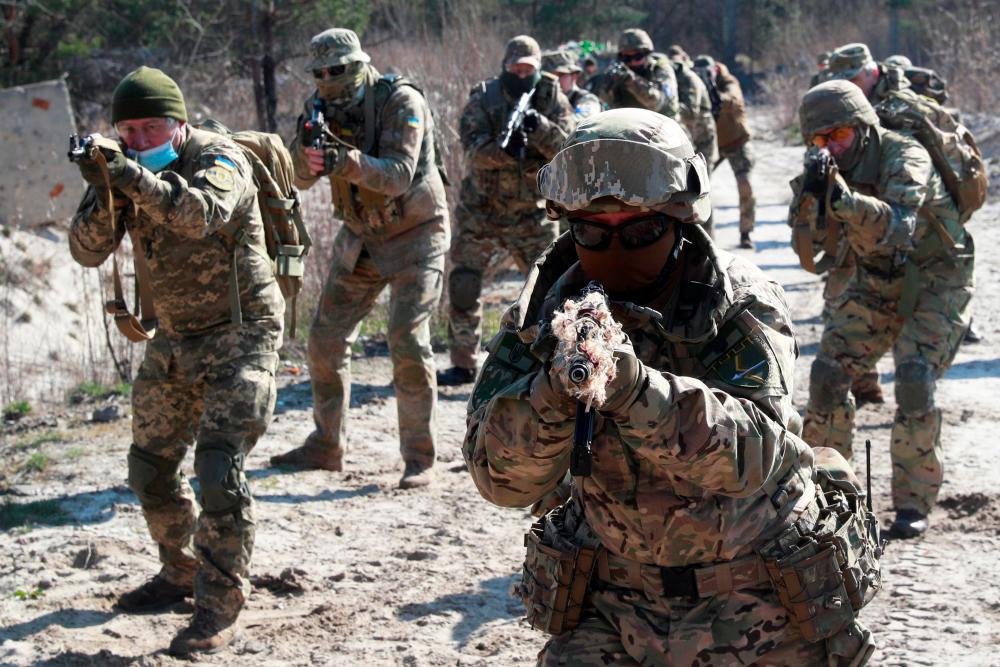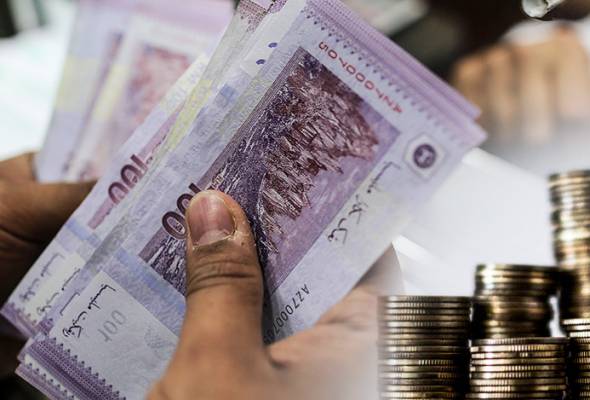
Published in Astro Awani, Daily Express, Asia News today, and theSundaily, image by theSundaily.
Underlying the clash of two nationalisms – Russian and Ukrainian – in the eponymous conflict is geopolitics and geo-economics which has been much written about.
In turn, the geopolitical and geo-economic roots of the Russia-Ukraine conflict is the pre-eminent epitome of a clash of civilisations – more specifically that of the two Europes – with Russia embodying the “First” Europe and Ukraine of today wanting to be part of what would be the “Second” Europe.
In other words, the conflict goes beyond the Cold War – contestation of ideology and flaunting of the moral superiority of one’s political system and worldview, i.e., the defence of liberal democratic values over-against the “authoritarian” successor of Communism.
The Cold War origins of this Eurasian conflict is due mainly to the North Atlantic Treaty Organization (Nato)’s refusal to respect and honour Russia’s sphere of influence. The US is the leading member of Nato (“first among equals”, primus inter pares). It’s an unqualified irony, therefore, given that the US perception of Russia remained virtually unchanged since the fall of Communism as set in place by the Yalta Agreement (1945) which provided the foundations for the respective spheres of influence.
The person that almost single-handedly shaped America’s Cold War worldview was none other than the late Zbigniew Brzeziński who served as the National Security Adviser/NSA (1977-1981) and much sought-after geo-strategist who had advised various administrations. Another irony was that Brzeziński belonged to the realist school of international relations rather than liberal or constructivist. Nonetheless, his thinking was also a synthesis or hybrid between liberal/progressive and constructivist views of international relations that was combined with being a hardliner (hawk) on US foreign policy, especially towards Russia. Perhaps Brzeziński’s anti-Russian philosophy is (partly) given his Polish origins.
His Master’s thesis is entitled, Russo-Soviet Nationalism (1950) – which would go a long way towards explaining Brzeziński’s “obsession” with the “perpetual threat” of Russian nationalism. In fact, Ukraine features quite prominently in that thesis throughout.
It’d be recalled that Poland had fought a fierce and “life-and-death” war against Russia in 1919 in the aftermath of the Bolshevik Revolution of 1917 which overthrew Tsarist rule representing the old order of First Europe – as (originally) identified with Byzantium or the Byzantine (Eastern Roman) Empire with its own theological tradition, ecclesial hierarchy, and liturgical culture that are very distinct from Western Christendom. The origins and early developments of Christianity came from what was then the East.
The religious character of Russia as representing First Europe was overturned by the new order of the Bolshevik Revolution under Lenin as inspired by secularist Marxism or Communism.
Marx was a Western philosopher who was deeply influenced by the theology of the Lutheran Reformation (as a stream and outgrowth of Western Christendom), rightfully or wrongfully. Luther’s “priesthood of all believers” (mis-read) as a revolt against the clergy is paralleled by the workers’ common ownership of the mode of production as a revolt against the capitalists.
That is, what was originally a theological point has been abstracted (universalised) and secularised – by the dialectician Marx following the example of his philosophical predecessor, i.e., (the Lutheran) G W F Hegel. The opposition between laity versus clergy and workers versus capitalists are examples of the dialectics which would come to characterise the Second Europe of the Western world which is now known for the dialectics between the personal versus natural; individual versus family/society; and freedom versus responsibility, etc.
First Europe eventually came to be centred in the late medieval Grand Duchy of Moscow via the early medieval Kievan Rus – which included modern-day Ukraine with the downfall of Constantinople to the Ottomans. This is why Putin hasn’t been shy from making references to the common baptismal “font” of both the Russian and Ukrainian peoples in the form of the Dnieper River. And the word, “Kievan” refers to Kyiv which is now, of course, the capital of Ukraine.
Ukraine was, however, not only part of Russian terrain historically. Later on, Poland under anti-Bolshevik strongman Colonel Piłsudski was intensely involved in Ukraine as part of the latter had been claimed by the former, among others. Bolshevik defeat at the decisive Battle of the Defence of Warsaw (1920) has been hailed as the Miracle on the Vistula River.
Now, there’s some obscure parallels between Ukraine and Afghanistan (considered as a traditional Russian and later Soviet sphere of influence) – which is difficult to ignore. For one, just as the US and Nato aren’t directly involved in the conflict between Russia and Ukraine, likewise US ground troops and air power weren’t deployed in Afghanistan. In short, both scenarios are proxy wars.
While Brzeziński didn’t play an (active) role in the current conflict, he single-handedly masterminded US strategy in Afghanistan which eventually led to Soviet withdrawal. As convincingly argued in Sowing the Seeds of Soviet Decline: Zbigniew Brzezinski and the Carter Administration: 1977-1981 by Stephen Paul Keville (PhD thesis, 2019), the demise of the Soviet empire started under the Carter administration with Brzeziński directing the course of the US covert intervention in Afghanistan rather than under Reagan who had precipitated the arms race.
It could well be speculated that perhaps the US is hoping that the same situation will apply to Russia in its invasion of Ukraine. That is, what’s being hoped for could be termed as “rollback”, as a counterpart and alternative to “containment”, with the purpose of regime change in Russia aimed at Putin. Rollback would then be the next phase of containment since for all intents and purposes, Russia is now well and truly contained on the European side of its Eurasian borders.
The “rollback” strategy hasn’t been confined to Nato alone.
Although Russia is an “autocratic” state with no meaningful liberal democratic traditions comparable to the West in sensu stricto (strict sense of the meaning), nonetheless the traditional symphony between the State and the Church (with the disruption and discontinuity happening under the Soviet era) has meant that:
- The State is accountable to the Church as the community of faith for the protection and preservation of civic morality;
- Russia has more in common with the Islamic world (indeed Mother Russia is a close ally of Iran), including opposition to settlements on the West Bank. This means any “clash of civilisation” narrative or otherwise is “inconveivable”.
However, on the other hand, Russia has its own version of ultra-nationalism as personified by radical thinker Alexander Dugin. As argued in “The Russian Neo-Eurasianism, the West and the Reconstruction of Islamic Civilization in Alexander Dugin’s Geopolitical Doctrines” by Ataullah Bogdan Kopanski (World Journal of Islamic History and Civilization, 3(3): 124-133, 2013), the First Europe worldview is played to the extreme end – with a revived Tsarist or Imperial Russia engaging in re-expansionism.
In contrast, Ukraine (and by inclusion the Orthodox Ukrainian Church/OUC that was only “established” in 2018) is now seeking to deviate/depart from First Europe by aligning with the EU. Two fundamental shifts can be observed:
- What’s happening now is the increasing secularisation and Westernisation of Ukraine with even the newly autocephalous/autonomous OUC soft-pedalling its stance on LGBTQ issues (see e.g., “We have to soften on LGBT to not be like Russian Church – Head of New Ukrainian Church”, Orthodox Christianity, December 25, 2018);
- What will happen is that Ukraine will suffer definitive impairment to its national sovereignty (in the name of “ever-closer union” among the peoples of Europe) should it accede to the EU.
Also, the Organization for Security and Co-operation in Europe (OSCE) – of which both Ukraine and Russia are members – failed to maintain collective peace and security involving the two countries by ensuring that the Minsk Protocols are implemented consistently and in full.
For example, Point 4 of Minsk I calls for the signatories (Russia, Ukraine and OSCE – otherwise known as the Trilateral Contact Group – alongside the Donetsk and Luhansk People’s Republics) “[t]o ensure the permanent monitoring of the Ukrainian-Russian border and verification by the OSCE with the creation of security zones in the border regions of Ukraine and the Russian Federation”.
It’s unfortunate, therefore, that both sides – Russia and Ukraine – have not exerted/expanded on their energy in the concrete to work towards a common settlement and resolution of outstanding issues in that regard, among others.
Ever since Zelensky came into power as President of Ukraine in 2019, he has been perceived to be intransigent in not wanting to implement the Minsk Protocols, despite the urging and pressure from France and Germany, and thereby to de-escalate the situation in the Donbas vis-à-vis Donetsk and Luhansk People’s Republics.
For the Ukrainian side, the Minsk Protocols means suppressing irredentism and recovering the Donbas whereas for the Russian side, it implies the possibility of having a say over Ukraine’s future (in exchange of re-integration of the Donbas, if ever). Zelensky has been especially insistent in not negotiating directly with the representatives of the two People’s Republics. This flat-out de-legitimising of the breakaway region is coupled with Russian demand that local elections be held before Ukraine regains control of the border there.
In the final analysis, Russia wants to use the Minsk Protocols to re-assert its influence and, by extension, (indirect) “dominance” in Ukraine (as its traditional “backyard” and sphere of influence). Though understandable, it’s no longer “feasible” in light of current developments and scheme of things. Ultimately, Ukraine is keen that the Minsk Protocols don’t lead to the breaking up of the country with particular reference to Point 11 of Minsk II which states that:
“Constitutional reform in Ukraine, with a new constitution to come into effect by the end of 2015, the key element of which is decentrali[s]ation …, and also approval of permanent legislation on the special status of particular districts of Donetsk and Luhansk oblasts …”.
Latest developments could well have rendered the relevance of the Minsk Protocols moot, however.
Russia is now upping the ante by calling for what’s an “impossible” red-line for Ukraine, namely that the latter recognises Donetsk and Luhansk as independent states, among the four principal demands.
As the war goes on (in parallel with intermittent talks to allow for humanitarian corridors and evacuation of civilian populations and the continuing negotiations), it’s unlikely that the will of Russia (First Europe) can be fully “re-imposed” on Ukraine (Second Europe).
More likely that a compromise has to be reached – with the re-affirmation of Nato’s rejection of Ukraine’s membership and the country’s eventual accession to the EU.
Dr Rais Hussin & Jason Loh Seong Wei are part of the research team of EMIR Research, an independent think tank focused on strategic policy recommendations based on rigorous research.

